In late February the wet, gray days of winter may weigh us down. A splash of color in the garden can lift our spirits.
Here are a few plants for early season color that you may want to add to your landscape. These plants bloom in late winter or early spring.
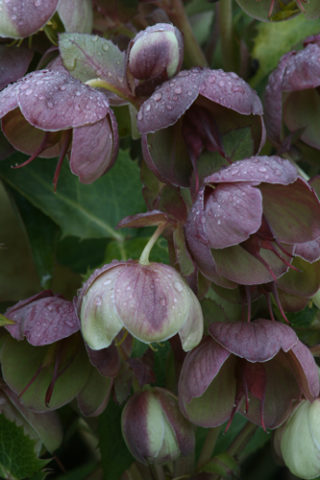
The burgundy flowers of helleborus x sternii may last into late spring. Photo © Richie Steffen/Great Plant Picks.
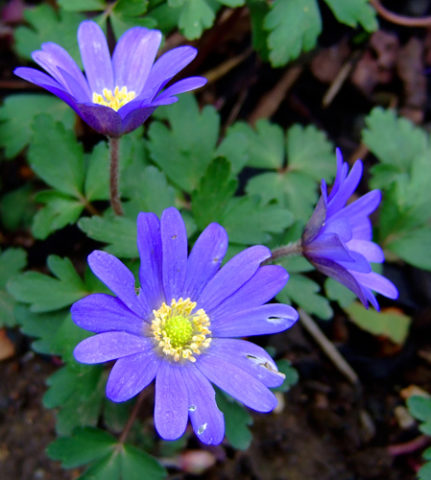
Anemone blanda is a charmer that blooms early and goes dormant in summer. Photo © www.wikipedia.org-1GrooverFW
Hellebores are a favorite perennial for many gardeners. In recent years color choices have expanded beyond creamy white and green through various shades of pink and purple. Cup-shaped or bell-shaped flowers may droop or face outward. They may grow in full sun or part shade.
Anemones, also known as windflowers, are small, daisy-like flowers with lovely foliage. Several varieties bloom in early spring. Blossoms may be white, rose or indigo. These bulbs grow from 4 to 12 inches tall, depending on variety. They grow best in full sun to light shade.
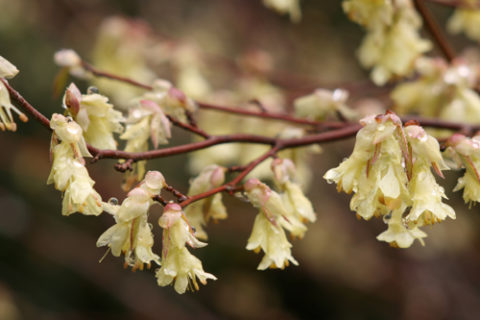
Corylopsis pauciflora, or buttercup winterhazel, has pastel yellow flowers from late February until April. Photo © Richie Steffen/Great Plant Picks.
Winterhazel (corylopsis) is a lovely shrub that blooms in late February. Small pastel flowers cover bare branches, bringing welcome color that may last into spring. Buttercup winterhazel is a compact variety, suitable for small gardens. Winterhazels grow best in light, open or dappled shade.
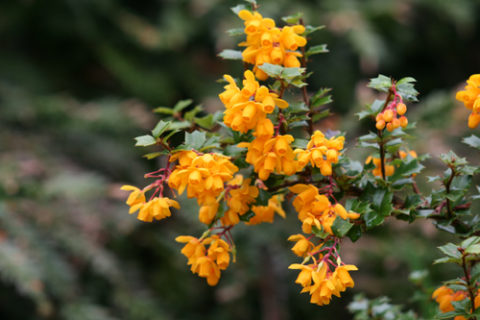
Berberis darwinii is an evergreen barberry from Chile. This tough shrub is easy to grow. Photo © Richie Steffen/Great Plant Picks.
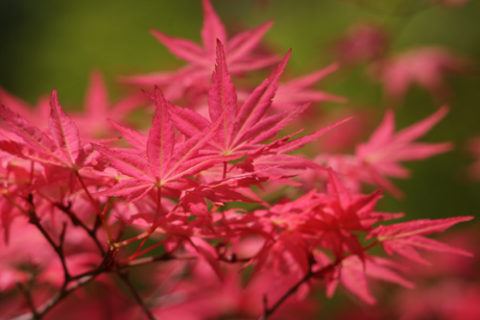
Acer palmatum ‘Shindeshojo’ has intense pink leaves in spring that slowly fade to green. Autumn color is pale pink and apricot. Photo © Richie Steffen/Great Plant Picks.
Several varieties of berberis, or barberry, bloom in early spring. Some continue blooming throughout the growing season. Darwin’s barberry has tangerine buds that open to bright orange flowers in March. It prefers full sun or light shade.
Many Japanese maples have colorful leaves in early spring. ‘Shindeshojo’ has shocking pink leaves that gradually fade to green. This small, shrubby tree prefers light to dappled shade. It grows well in containers.
Find more plants for early season color at Great Plant Picks, Better Homes and Gardens and The Oregonian/Oregon Live.
